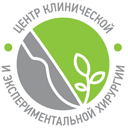KARL STORZ
Laparoscopic organ preserving resection of two pheochromocytes from a single left adrenal gland
Автор: Puchkov K.V.
Laparoscopic organ preserving resection of two pheochromocytes from a single left adrenal gland.
Professor Puchkov K.V. is performing an operation (2019).
Patient 24 years old, in the single left adrenal gland were found two tumors about 2 cm each in diameter, they located in the medial pedicle and in the body of the organ. At the age of 20, he was examined about hypertensive crises. In 2015, bilateral adrenal lesions were diagnosed: on the right a tumor - up to 5 cm, on the left side - 2 lesions: 1 and 1.5 cm. Right-sided adrenalectomy was performed, the histological conclusion was: malignant pheochromocytoma. The patient refused bilateral adrenalectomy. In the future, according to CT data, the growth of lesions of the left adrenal gland is noted. In the analyzes: daily urine metanephrins: maximum metanephrine 8.897 mg/day, normetanephrine 319.3 mg/day. In the preoperative period, he received «Cardura». A laparoscopic organ-sparing surgery was performed - removal of two formations with full preservation of the adrenal tissue. Access to the adrenal gland was done by mobilising the splenic angle of the colon and dissecting the tissue between the Tolds fascia and Herota fascia. The intersection of the vascular structures and adrenal tissue is performed by alternating ligation systems — 5 mm Thunderbeat Olympus instrument and 5 mm LigaSure MEDTRONIC COVIDIEN instrument. The operation is carried out quickly and bloodless. The tumor is cut off from the body of the adrenal gland and placed in a plastic container in which was removed from the abdominal cavity. For the hemostasis «Tachocombe» was used at the sites of tumor removal. The operation time was 40 minutes. Histology - pheochromocytoma of solid-alveolar structure with polymorphoncellular composition.
You can read about this technique in detail on the personal cite of Professor Puchkov Konstantin Viktorovich. To go to the link.
Laparoscopic appendectomy for complicated appendicitis (phlegmon)
Автор: Puchkov K.V.
Laparoscopic appendectomy for complicated appendicitis (phlegmon). Professor Puchkov K.V. is performing an operation (2018).
The operation is performed in acute complicated appendicitis with phlegmon. In film the dissection technique of the mesentery of the appendix with 5 mm LigaSure MEDTRONIC COVIDIEN instruments and Karl Storz instruments is shown. Then its base is stitched and intersected with a linear white stapler (MEDTRONIC COVIDIEN) (since there is no infiltration of the base of the appendix and the dome of the cecum). A specimen was removed from the abdominal cavity through a 12 mm trocar in a plastic container. Then the abdominal cavity is washed with warm saline solution. The duration of the operation is 12 minutes.
Laparoscopic right-sided enucleation of adrenal tumor for pheochromocytoma
Автор: Puchkov K.V.
Laparoscopic right-sided enucleation of adrenal tumor for pheochromocytoma.
Professor Puchkov K.V. is performing an operation (2018).
Patient 53 years old was admitted to the hospital, it was found a 3 cm tumor of the right adrenal gland, located in the medial pedicle. The patient noted a history of hypertensive crises. A laparoscopic organ-sparing surgery was performed - right-sided enucleation of the tumor. Access to the adrenal gland was done by dissecting the tissue between the Tolds fascia and Herota fascia. The intersection of the vascular structures and adrenal tissue was performed by alternating the ligation systems — 5 mm Thunderbeat Olympus instrument and 5 mm LigaSure MEDTRONIC COVIDIEN instrument. The tumor was cut off from the body of the adrenal gland and placed in a plastic container in which was removed from the abdominal cavity. The operation time was 30 minutes.
The operation was carried out quickly and bloodless. Additional hemostasis was carried out by the PerClot system (Italy). At the end of the film, the removed specimen is shown - adrenal pheochromocytoma (3 cm).
Histology - adrenal pheochromocytoma.
You can read about this technique in detail on the personal cite of Professor Puchkov Konstantin Viktorovich. To go to the link.
Laparoscopic right-side partial adrenalectomy for pheochromocytoma
Автор: Puchkov K.V.
Laparoscopic right-side partial adrenalectomy for pheochromocytoma.Professor Puchkov K.V. is performing an operation (2018).
Patient 44 years old, was admitted with a tumor of the right adrenal gland about 6 cm in size located in its body. In the analyzes, was found out the increase of urine metanephrine: metanephrine 429 µg / day (up to 320), normetanephrine 695 µg / day (up to 390), cortisol and aldosterone were within normal limits. In the preoperative period she received «Cardura». Concomitant chronic calculous cholecystitis. A laparoscopic organ-sparing surgery was performed - partial adrenalectomy and cholecystectomy. Access to the adrenal gland was performed by dissecting the tissue between the fascia of Tolda and Gerot. The intersection of the vascular structures and adrenal tissue was performed by alternating the ligation systems — 5 mm Thunderbeat Olympus instrument and 5 mm LigaSure MEDTRONIC COVIDIEN instrument. The tumor was cut off from the body of the adrenal gland and placed in a plastic container in which it was removed from the abdominal cavity. Operation time 45 minutes.
The operation was carried out quickly and bloodless. Additional hemostasis was carried out by the PerClot system (Italy). At the end of the film, a removed specimen is shown - the adrenal pheochromocytoma (6 cm). Histology - the adrenal pheochromocytoma.
You can read about this technique in detail on the personal cite of Professor Puchkov Konstantin Viktorovich. To go to the link.
Laparoscopic left-sided partial adrenalectomy for pheochromocytoma
Автор: Puchkov K.V.
Laparoscopic left-sided partial adrenalectomy for pheochromocytoma.Professor Puchkov K.V. is performing an operation (2018).
Patient 37 years old, was admitted with a tumor of the left adrenal gland, 4 cm in diameter, located in the lateral pedicle. BMI - 32.3. In the analyzes was found out the increase of urine metanephrine: metanephrine 460 mcg / day (up to 320), normetanephrine 595 mcg / day (up to 390), cortisol and aldosterone were within normal limits. In the preoperative period she received «Cardura». A laparoscopic organ-sparing surgery was performed - left partial adrenalectomy. Access to the adrenal gland is accomplished by dissecting the splenic angle of the colon and dissecting the tissue between the fascia of Toldt and Herot. The intersection of the vascular structures and adrenal tissue was performed by alternating the ligation systems — 5 mm Thunderbeat Olympus instrument and 5 mm LigaSure MEDTRONIC COVIDIEN instrument. The operation was carried out quickly and bloodless. The tumor was cut off from the body of the adrenal gland and placed in a plastic container in which it was removed from the abdominal cavity.
Additional hemostasis was carried out by the PerClot system (Italy). The operation time was 40 minutes.
Histology - adrenal pheochromocytoma
You can read about this technique in detail on the personal cite of Professor Puchkov Konstantin Viktorovich. To go to the link.
Laparoscopic excision of nodular adenomyosis and myomectomy with transient occlusion of arteries
Автор: Puchkov K.V.
Professor Puchkov K.V. is performing an operation (2018).
In this video the technique of laparoscopic excision of nodular adenomyosis ( 9 cm), located on the posterior wall of uterus and myomectomy with the transient occlusion of arteries (internal iliac arteries) according to the author’s method of Professor Puchkov K.V. is demonstrated. A 34 year-old patient is operated on for mentioned above problems. At the first stage, immediately after bifurcation of the common iliac artery, pelvic abdomen is opened, and De Bekey vascular forceps are transiently applied onto the internal artery. It gives a possibility to avoid blood loss during the operation. Then nodular adenomyosis is dissected by a monopolar electrode within the boundaries of healthy tissues, without opening uterine cavity. The wound is stitched by V-lock system (MEDTRONIC COVIDIEN), having monofilament resorbable polydioxanone thread, oriented in space with the set angle. It gives a possibility to thread to slide freely in one direction and not to be shifted in the opposite direction. This system gives a possibility to stitch uterine wound fast and layer by layer with the proper hemostasis. Additionally the wound is strengthened by three interrupted Z-shaped stitches, using “Monocril” thread. At the second stage myomectomy is performed with stitching uterine wound, using interrupted suture. Then the forceps are removed from the internal iliac artery; and blood circulation is restored in uterus. Myomatous and adenomyosis nodes are removed from the abdominal cavity by means of electromechanical morcellation Rotocut G1 of Karl Storz Company. Anticommissural gel is applied onto the suture line.
You can read about this technique in detail on the personal cite of Professor Puchkov Konstantin Viktorovich. To go to the link.
Laparoscopic low anterior resection of rectum (partial TME-total mesorectal excision) with the use of a monopolar “hook” electrode
Автор: Jim Khan
Laparoscopic low anterior resection of rectum (partial TME-total mesorectal excision) with the use of a monopolar “hook” electrode.
D-r Jim Khan is performing an operation (Great Britain, Portsmouth) (2018).
In this film the technique of performing low anterior resection of rectum (partial TME - total mesorectal excision) with the use of a monopolar “hook” electrode is presented. A 44 year-old male patient was treated, having the diagnosis: Cancer of middle third part of rectum fT2N0M0, G2. During the preoperation investigation of organs of abdominal cavity and small pelvis, using MRT and RCT, no data about pathologic lymphatic nodes in the abdominal cavity, small pelvis and mesorectum had been obtained. The “classical” scheme of positioning of trocars was used: on the right in the iliac area, to the right and to the left-in the mesogastric area. Operation started with the incision of peritoneum to the right of rectum, identification of interfascial layer without vessels with the help of a monopolar instrument “hook” (“Karl Storz”). Transection of the inferior mesenteric artery took place near the origin with Harmonic (“Ethicon”) device after preliminary clipping of it by titanic clips. Then exposure of rectum along its posterior wall took place with identification of the left ureter. The next stage was exposure of the inferior mesenteric vein, identification of embryological layer of the large colon, its exposure in the medialateral direction towards the splenic flexure. For safe mobilization of the splenic flexure of the colic colon inframesocolic access was used. Preliminary dissection of pancreas was done, opening of omentum sac, after that peritoneum of the left lateral canal was dissected, mobilization of the descending part of the colic colon and the splenic flexure of the colic colon was done. Exposure of rectum was done in 5 cm lower than lower border of tumour along the posterior wall, then-along the right and left semicircumference, and only at the end-along the anterior wall. Transection of the colon in its distal part was done EchelonFlex-60 instrument (a blue reload) (“Ethicon”). Then midline minilaparotomy (approx.5 cm) was performed, the latex ring “Dextrus” was placed in the wound for restriction the tissue of the anterior abdominal wall from the colon with tumour. The colon was exteriorized, resection of specimen was done, CDH-29 (”Ethicon”) device head was inserted into the proximal part, it was fixed by purse-string suture, using “Vicryl” 2-0 thread, and immersed into the abdominal cavity. CDH-29 device was inserted transanally, stitching was done, then CDH-29 was removed. The next stage loop ileostoma was created in the right iliac area. The operation was finished by placing drainage transabdominally via trocar wound in the left mesogastric area. Operation duration was 240 minutes.





 Video of operations
Video of operations

